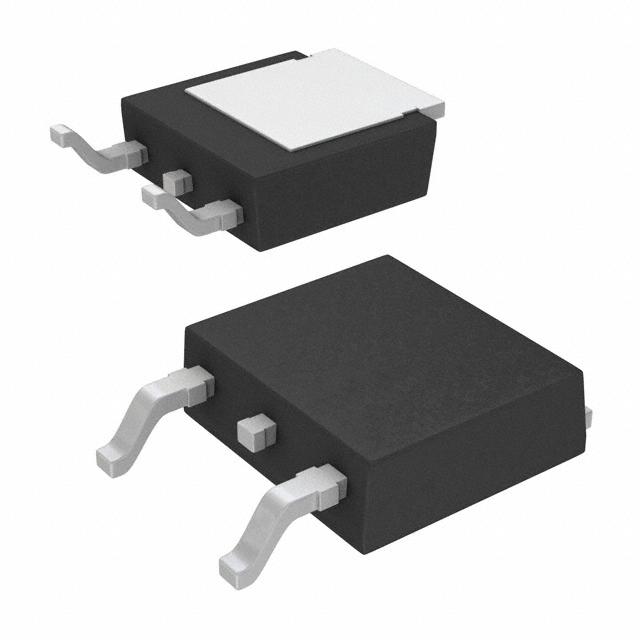
The activity of extra discounts on wholesale prices is in full swing…
Please fill in your contact information and we will send you the latest wholesale price list.

A transistor is a semiconductor device that serves as an electronic switch or amplifier, controlling current flow through one material type (usually silicon) by applying a voltage or current to another. Structurally, transistors are three-terminal components—commonly configured as emitter, base, and collector (in BJTs), or source, gate, and drain (in FETs). Since their invention, transistors have become fundamental to all modern electronics, from digital logic circuits to analog signal processing. Unlike earlier vacuum tubes, transistors are compact, reliable, and energy-efficient, operating by manipulating electron or hole movement across p-n junctions or insulated gates. Understanding the differences between transistor types—BJTs, MOSFETs, IGBTs, JFETs, and PUTs—can help you select the most appropriate component based on function, power requirements, and signal characteristics. Types of Transistors Bipolar Junction Transistors (BJTs), including NPN and PNP configurations, are current-controlled devices where base current modulates a larger collector-to-emitter current. Known for their high current gain and linear amplification characteristics, BJTs are ideal for analog applications such as audio amplification or low-frequency signal conditioning. However, their relatively low input impedance results in greater power consumption compared to field-effect devices. Field-Effect Transistors (FETs), particularly MOSFETs (Metal-Oxide-Semiconductor FETs), are voltage-controlled with very high input impedance. They regulate current via an electric field applied across an insulated gate, making them highly efficient for digital switching applications. N-channel MOSFETs generally offer superior conductivity and switching speed over P-channel devices, making them the preferred choice in power electronics and logic circuits. Insulated Gate Bipolar Transistors (IGBTs) combine the gate control of MOSFETs with the output drive of BJTs, resulting in a device that excels in high-voltage, high-current applications. They\'re widely used in power inverters, motor drives, and energy conversion systems where switching efficiency and robustness are critical. Junction Field-Effect Transistors (JFETs) provide excellent performance in low-noise, high-impedance analog circuits. Though largely replaced by MOSFETs in many roles, JFETs still serve a purpose in RF amplification and precision signal conditioning due to their simplicity and stable characteristics. Programmable Unijunction Transistors (PUTs) are specialized for use in timing circuits, waveform generation, and trigger control. These devices operate by establishing a threshold voltage at which they rapidly switch, making them useful in oscillators and control systems.
| Select products | Mfr | Description | Package | Supplier Device Package | Mounting Type | Series | Operating Temperature |
|---|---|---|---|---|---|---|---|
 1014-12 $141.06000 | Microsemi Corporation | RF TRANS NPN 50V 1.4GHZ 55LT | Bulk | 55LT | Chassis Mount | - | 200°C (TJ) |
 1014-6A $145.49000 | Microsemi Corporation | RF TRANS NPN 50V 1.4GHZ 55LV | Bulk | 55LV | Chassis Mount | - | 200°C (TJ) |
| Microsemi Corporation | RF TRANS NPN 65V 1.15GHZ 55FW | Bulk | 55FW | Chassis Mount | - | 200°C (TJ) | |
 10213 $1.06000 | SparkFun Electronics | N-CHANNEL MOSFET 60V 30A | Bulk | TO-220 | Through Hole | QFET™ | -55°C ~ 175°C (TJ) |
 10349 $1.70000 | SparkFun Electronics | P-CHANNEL MOSFET 60V 27A | Bulk | TO-220 | Through Hole | QFET™ | -55°C ~ 175°C (TJ) |
 1035MP $95.36000 | Microsemi Corporation | RF TRANS NPN 65V 1.15GHZ 55FW-1 | Bulk | 55FW-1 | Chassis Mount | - | 200°C (TJ) |
 10502 $376.79000 | Microsemi Corporation | RF TRANS NPN 65V 55SM | Bulk | 55SM | Chassis Mount | - | 230°C (TJ) |
| onsemi | TRANS NPN 45V 0.5A SOT-23 | Tape & Reel (TR) | SOT-23 | Surface Mount | - | -55°C ~ 150°C (TJ) |